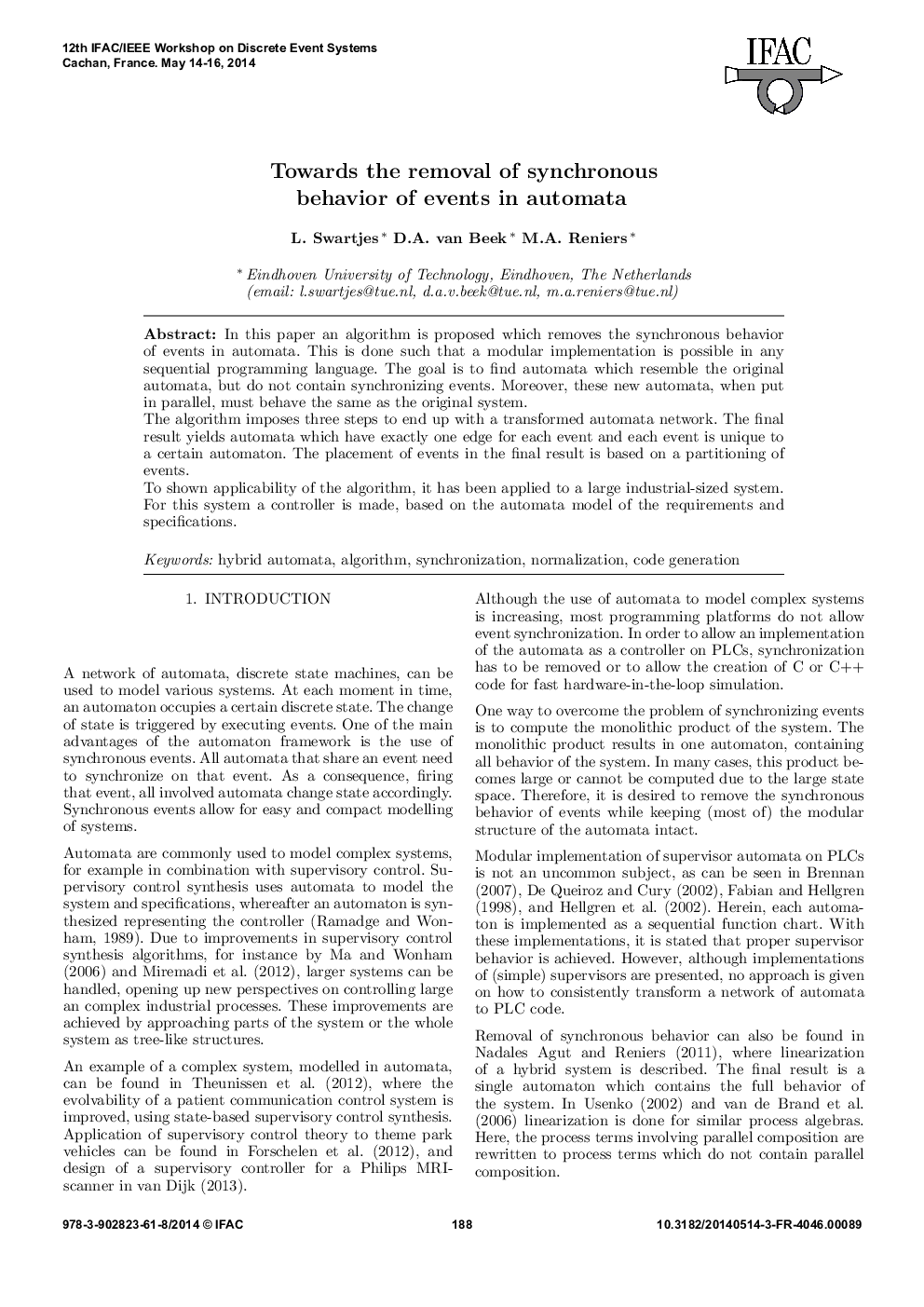| Article ID | Journal | Published Year | Pages | File Type |
|---|---|---|---|---|
| 715487 | IFAC Proceedings Volumes | 2014 | 7 Pages |
In this paper an algorithm is proposed which removes the synchronous behavior of events in automata. This is done such that a modular implementation is possible in any sequential programming language. The goal is to find automata which resemble the original automata, but do not contain synchronizing events. Moreover, these new automata, when put in parallel, must behave the same as the original system. The algorithm imposes three steps to end up with a transformed automata network. The final result yields automata which have exactly one edge for each event and each event is unique to a certain automaton. The placement of events in the final result is based on a partitioning of events. To shown applicability of the algorithm, it has been applied to a large industrial-sized system. For this system a controller is made, based on the automata model of the requirements and specifications.
